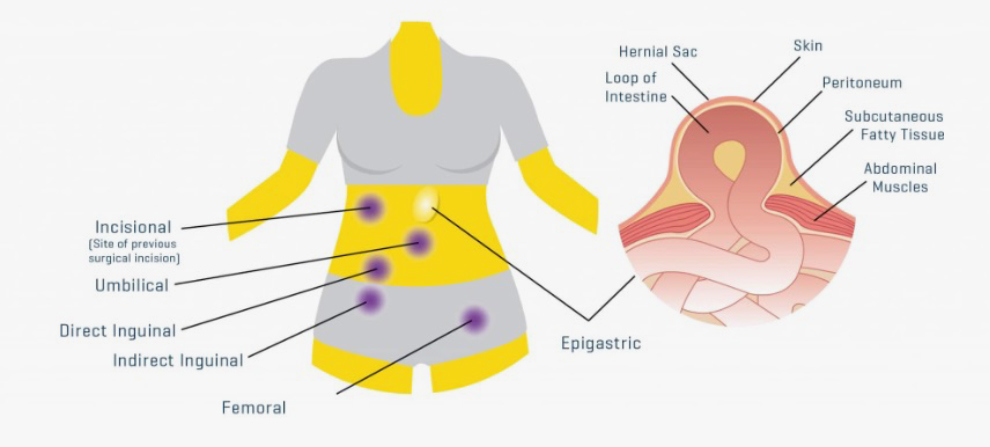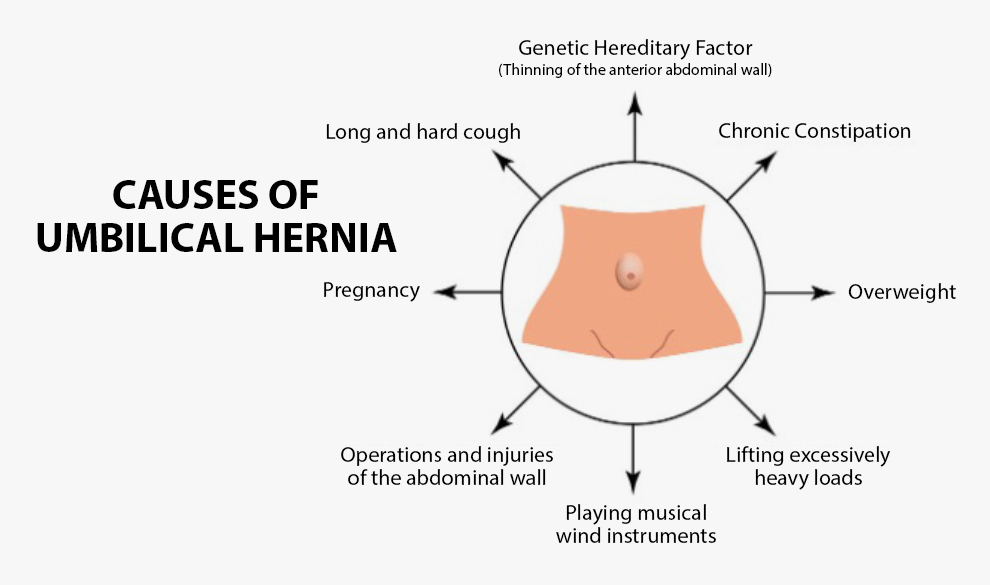What is an umbilical or paraumbilical hernia?
This is a weakness or hole of the belly button (umbilicus) or tissue around the umbilicus (paraumbilical). Usually some internal fat or bowel can push through the weak spot/ hole making it bulge. This will most likely get bigger and become unsightly if not treated. Sometimes fat or bowel gets caught in the hernia causing severe pain and vomiting (called strangulation or incarceration) and requires an emergency operation to deal with the problem.

What causes an umbilical or paraumbilical hernia?
They may occur in adults as a result of the strain which raises the pressure in the tummy (abdomen), causing a weakness or tear in the abdominal wall. This can be caused by:
- Chronic persistent cough.
- Being overweight or pregnant.
- Lifting, carrying or pushing heavy loads.
- Straining on the toilet.

How is the operation performed?
You can be given a regional or a general anaesthetic. The choice depends partly on which you prefer, and partly on what your anaesthetist and surgeon think is best. In some cases when the hernia is relatively small and your general medical condition does not allow you to tolerate the stress of a general anaesthetic, the operation can be done under local anaesthetic. Having a general anaesthetic means that you will be completely asleep during the operation. Having a regional anaesthetic means that you will be awake during the operation, you will feel that something is being done at the area of the operation but will not feel pain.
A cut is made near the tummy button. Any fat or bowel in the hernia is pushed back or removed. The weakness is mended/closed usually with strong stitches. Another alternative is to reinforce the weak spot with a piece of synthetic material (mesh). This is usually done when the tissues around the weak spot are not strong enough to be stitched up together with strong stitches or when the weak spot is so big that it is impossible to close it with stitches alone. Soon scar tissue develops above and under the patch and this makes it very strong and makes it less likely that the hernia can come back again.
The skin is then closed up, usually with invisible dissolving stitches. The appearance of your tummy button may change after the operation and rarely may have to be removed, especially if the hernia is large. Keyhole surgery for umbilical hernia repair is rare. There is no clear evidence at the moment that it offers a significant advantage compared to the traditionally performed operations.
Most people will go home on the same day as their operation. Some people may need to stay in for a day or two depending on your health.
How long will it take to recover from surgery?
We advise no heavy lifting or vigorous exercise for 6 weeks (this allows the tissue inside your body to heal). However most people will be able to return to lighter activities/ office jobs after 2 weeks.
You can drive as soon as you can make an emergency stop without discomfort in the wound, i.e. after about 10 days. You may restart sexual relations within a week or two, when the wound is comfortable enough.
Contact us
Should you wish to consult Mr Lingam about your hernia, please send an email to mklingam.sec@gmail.com or call:
Derby Nuffield on 01332 540100
Derby Private Suite on 01332 786128
Mr Lingam consults at the Derby Nuffield on Tuesday AM, Wednesday and Friday PM and at Derby Private Suite on a Thursday PM.
